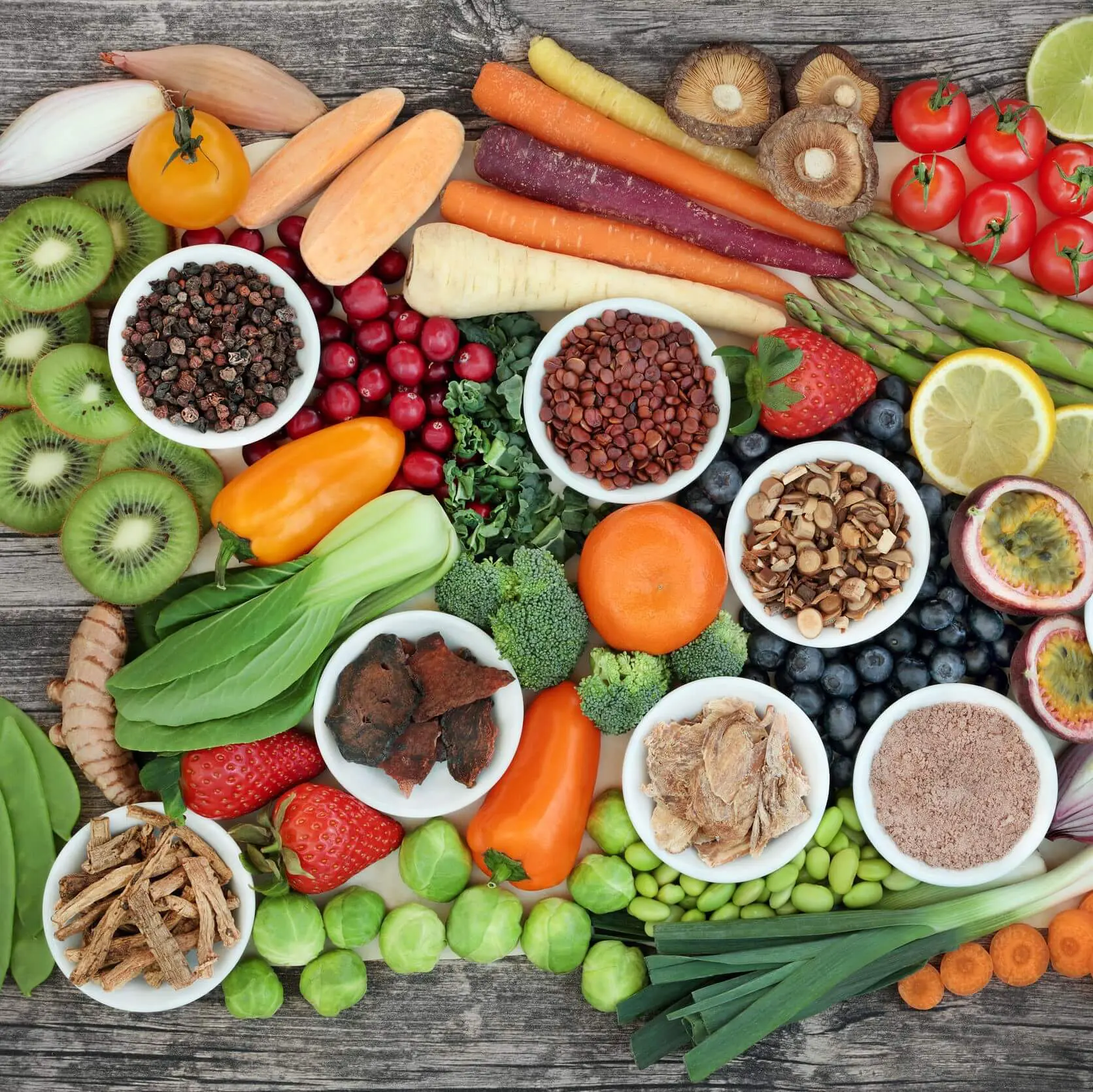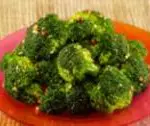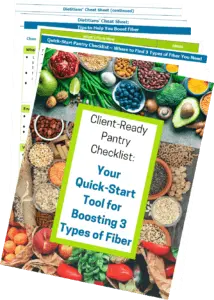
Broccoli: Something Special or Just Another Green Vegetable?

Not-So-Boring-Broccoli from the American Institute for Cancer Research http://www.aicr.org/health-features/test-kitchen/six-on-the-side-dishes.html
Exotic tropical fruits come and go as “super foods” in the spotlight, but for years broccoli has maintained a place on the A-list of healthy vegetables. Is it really justified, or just another example of nutrition hype? Do some of us benefit more than others?
No single vegetable can provide all the compounds found in plant foods that seem to play a role in reducing cancer risk. Broccoli – along with its other cruciferous vegetable “cousins” – really does seem to rank among the all-stars.
Although broccoli literally brings a lot to the table, what I find especially intriguing is its impact as a cruciferous vegetable. This is a larger family of vegetables than many people realize, including not just broccoli, cabbage, Brussels sprouts and cauliflower, but also bok choy, collard greens, kale, rapini, radishes, and more. When the vegetable cells are disrupted by chewing or chopping, an enzyme is released that converts the inactive glucosinolate compounds they contain to isothiocyanate and indole compounds that seem to have significant anti-cancer effects.
In cell studies and animal research, these compounds:
- Protect us from carcinogens by inhibiting enzymes that activate carcinogens and stimulating enzymes that detoxify them
- Decrease the inflammation that creates a pro-cancer environment within the body
- Turn on tumor suppressor genes that slow cell growth so that cell damage can be repaired and stimulate a process called apoptosis in which damaged cells self-destruct
- Decrease growth factors necessary for cancer cells to be able to spread
- May also shift estrogen metabolism to favor a weaker, less cancer-promoting form.
Some questions people often ask about broccoli and other cruciferous vegetables:
Most of the studies showing benefit are lab studies. Does human data support a benefit?
Population studies do link greater consumption of cruciferous vegetables with lower risk of lung, colorectal, stomach, breast, prostate, and other cancers, although not consistently.
♦ One year-long small intervention trial showed that men who ate 14 ounces of broccoli a week showed changes in insulin and growth factor signaling that would be expected to be cancer-protective.
♦ Yet in one study, although total cruciferous vegetable consumption was not strongly linked to risk of breast cancer, women estimated to consume the largest amounts of isothiocyanate compounds showed an 18 percent lower risk of breast cancer, and a 32 percent lower risk of postmenopausal breast cancer. In the same group of Chinese women, when researchers assessed exposure to cruciferous vegetables by urinary excretion of compounds that form as the body metabolizes the active protective phytochemical, women who excreted the most later developed only half as much breast cancer as women who excreted the least
Why do the findings from human studies seem so inconsistent?
♦ Isothiocyanate compounds from broccoli and other cruciferous vegetables come in a variety of forms; we don’t know how they may differ in effects.
♦ Even if they eat the same amount of broccoli or total cruciferous vegetables, people will vary in the amount of isothiocyanates they get based on how much they chew the vegetable (exposing more of it to the enzyme that breaks down the inactive glucosinolates into the active compounds) and the particular types of bacteria in their gut (which also break down the inactive compounds to the active forms).
♦ Genetic differences make some people metabolize and eliminate the active compounds from the body sooner than others, leaving them with less time exposed to their protection. In one study, among women with particular forms of genes that control how cruciferous compounds are metabolized, those with highest levels of isothiocyanate compounds in their urine showed a 50 percent lower risk of colorectal cancer than those with lowest levels of the compounds; other women did not show protection.
Does it matter if I eat cruciferous vegetables like broccoli and cabbage raw or cooked?
♦ Cooking, even briefly blanching the vegetables before freezing, inactivates the enzyme that converts the inactive glucosinolates to active compounds. Studies show that people get more isothiocyanates from raw rather than cooked forms. That doesn’t mean you get nothing from cooked forms, however; those friendly gut bacteria do help break down the glucosinolates to provide protective isothiocyanates.
♦ Glucosinolates are water-soluble compounds that may leach out into cooking water. Boiling cruciferous vegetables from 9-15 minutes resulted in 18-59% decreases in the total glucosinolate content of cruciferous vegetables. So when you cook these vegetables, cook lightly to crisp-tender in methods that use little or no water, such as steaming or microwaving, to reduce glucosinolate losses.
Keep in mind: There’s more to broccoli than its glucosinolate compounds. Like many other dark green vegetables, it’s loaded with
- beta-carotene, which provides antioxidant protection to our DNA and promotes cell-to-cell communication that helps control cell growth;
- vitamin C to provide further antioxidant power;
- folate, a B vitamin that helps maintain healthy DNA and keep cancer-promoting genes “turned off”; and
- magnesium, which seems to keep insulin functioning properly, important to reduce risk of type 2 diabetes and probably cancer, too.
Some of us may get more benefit from cruciferous vegetables than others, but for all of us they are a choice that makes sense to include regularly as part of a wide variety of other vegetables and fruits.
Let’s talk: What are your favorite ways to prepare broccoli and other cruciferous vegetables? If you have children or others who have trouble with the slightly bitter flavor, how have you overcome it?
References
Navarro SL, et al. Mechanisms of action of isothiocyanates in cancer chemoprevention: an update. Food Funct. 2011 Oct;2(10):579-87. Epub 2011 Sep 21. PMID: 21935537
Kim MK, & Park JH. Cruciferous vegetable intake and the risk of human cancer: epidemiological evidence. Proc Nutr Soc., 12/2008. 8:1-8.
Traka, M., et al., Broccoli consumption interacts with GSTM1 to perturb oncogenic signalling pathways in the prostate. PloS one, 2008. 3(7): p. e2568.
Lee, SA et al. Cruciferous vegetables, the GSTP1 Ile105Val genetic polymorphism, and breast cancer risk. Am J Clin Nutr., 2008. 87(3):753-60.
Fowke, JH et al. Urinary isothiocyanate levels, brassica, and human breast cancer. Cancer Res., 2003. 63(14):3980-6.
Yang, G., et al. Isothiocyanate exposure, glutathione S-transferase polymorphisms, and colorectal cancer risk. Amer J Clin Nutr, 2010. 91(3): p. 704-11.
McNaughton SA, and Marks GC. Development of a food composition database for the estimation of dietary intakes of glucosinolates, the biologically active constituents of cruciferous vegetables. Br J Nutr. 2003;90(3):687-697.
Song, L. and Thornalley, PJ. Effect of storage, processing and cooking on glucosinolate content of Brassica vegetables. Food and chemical toxicology : an international journal published for the British Industrial Biological Research Association, 2007. 45(2): p. 216-24.
Vermeulen, M et al. Bioavailability and Kinetics of Sulforaphane in Humans after Consumption of Cooked versus Raw Broccoli. J Agric Food Chem, 2008. 56(22):10505-9
Conaway, CC et al. Disposition of glucosinolates and sulforaphane in humans after ingestion of steamed and fresh broccoli. Nutr Cancer, 2000. 38(2):168-78.
Rungapamestry, V et al. Effect of meal composition and cooking duration on the fate of sulforaphane following consumption of broccoli by healthy human subjects. Br J Nutr. 2007. 97(4):644-52.
2 Comments
Leave a Comment
Published : April 20, 2012
Tagged: breast cancer, broccoli, cancer prevention, colon cancer, cruciferous vegetables, glucosinolates, healthy diet, healthy eating, isothiocyanates, plant-based diet, reducing cancer risk, vegetables
Meet the author/educator
I Take Nutrition Science From Daunting to Doable.™
As a registered dietitian nutritionist, one of the most frequent complaints I hear from people — including health professionals — is that they are overwhelmed by the volume of sometimes-conflicting nutrition information.
I believe that when you turn nutrition from daunting to doable, you can transform people's lives.
Accurately translating nutrition science takes training, time and practice. Dietitians have the essential training and knowledge, but there’s only so much time in a day. I delight in helping them conquer “nutrition overwhelm” so they can feel capable and confident as they help others thrive.
I'm a speaker, writer, and nutrition consultant ... and I welcome you to share or comment on posts as part of this community!



[…] https://karencollinsnutrition.com/smartbytes/2012/04/20/broccoli-something-special-or-just-anothe… […]
[…] goal of boosting vegetable consumption. If you read Smart Bytes® regularly, then you know that vegetables are key players to get not only fiber, but a broad array of vitamins, minerals, and plant compounds […]